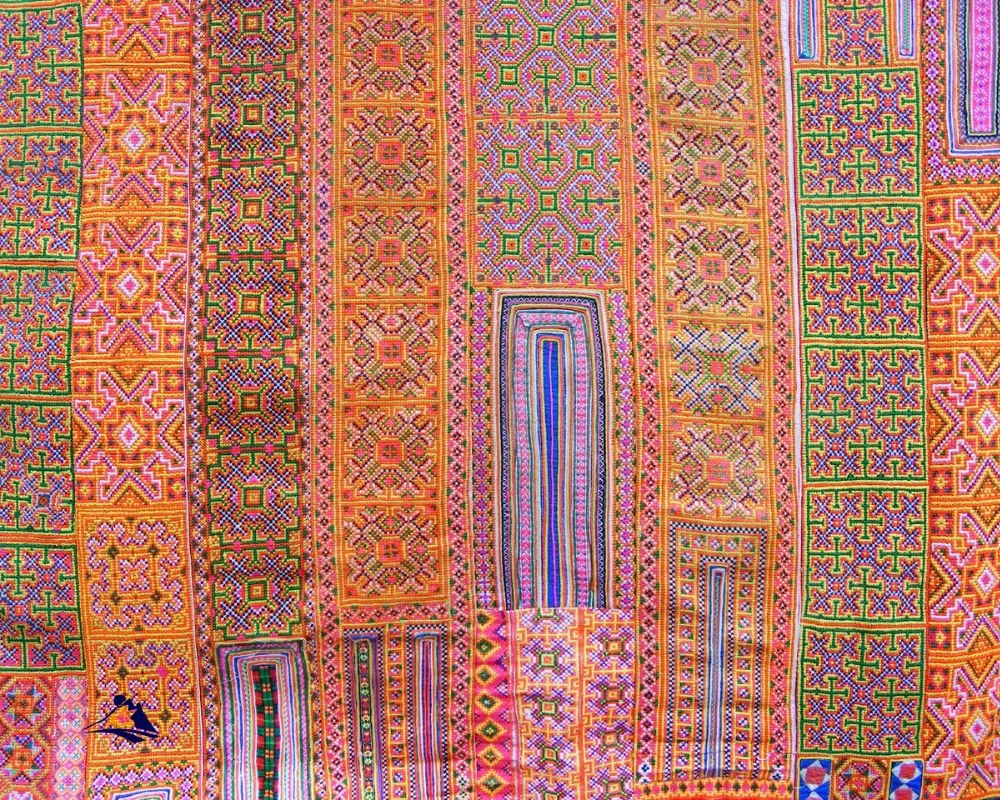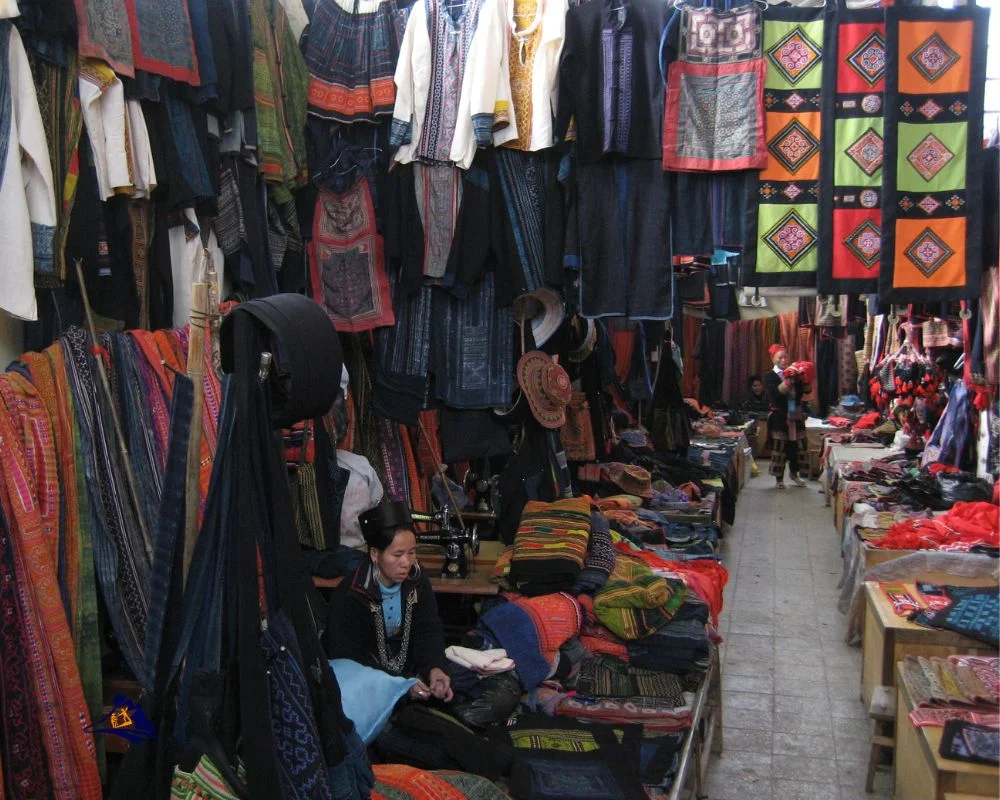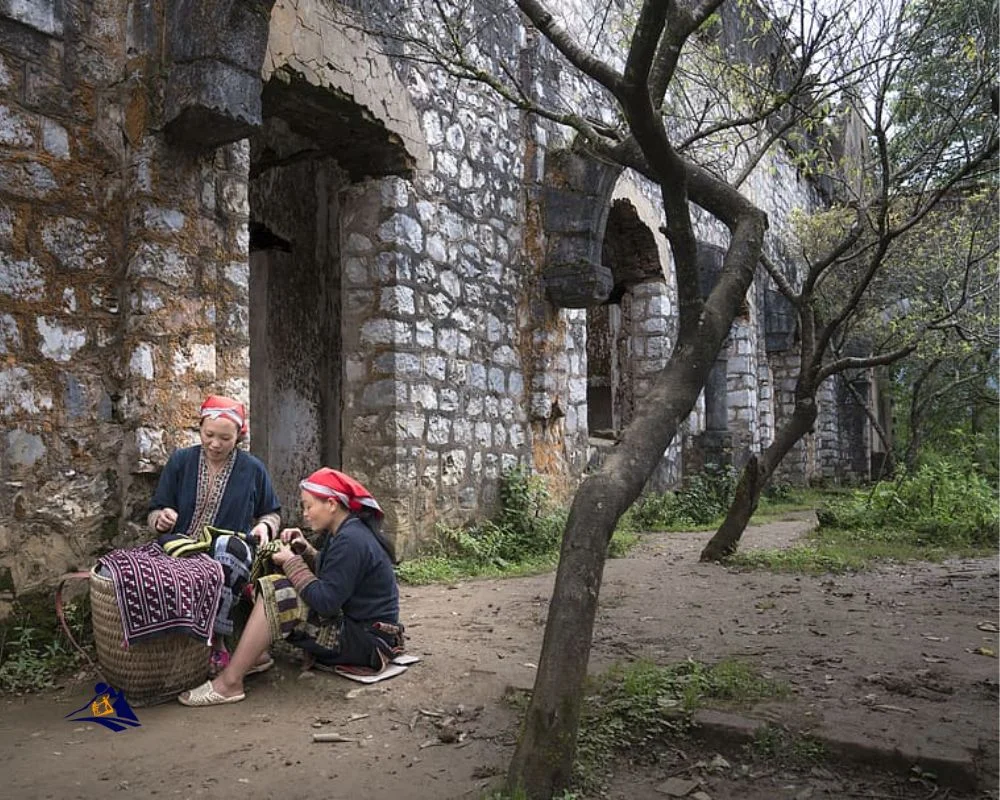Are you seeking unique and authentic souvenirs from your travels? Look no further than the charming town of Sapa, nestled in the mountains of northern Vietnam. Sapa boasts a rich cultural heritage, home to various ethnic minority groups who have been crafting artisanal products for generations.

From intricate textiles to delicate ceramics, Sapa’s handicrafts offer a glimpse into the region’s history and traditions. Not only are these products beautiful and functional, but they also support local communities and promote sustainable tourism. So why settle for mass-produced trinkets when you can bring home something truly special from Sapa? Join us as we explore the best artisanal products that this enchanting town has to offer.
Table of Contents
ToggleSapa’s Handicrafts
Get ready to be impressed by the stunning handcrafted items that will transport you to a world of intricate design and unparalleled craftsmanship. Sapa is home to some of the most skilled local artisans who have kept alive traditional techniques that have been passed down through generations. These handicrafts represent a rich cultural heritage that has stood the test of time.

From wooden carvings, woven baskets, and jewelry made from natural materials, you can find a wide variety of handmade items in Sapa’s markets and shops. Each piece tells a story and reflects the unique identity of the Hmong, Tay, Dao, and other ethnic groups living in this region. When you purchase one of these handcrafted goods, not only are you supporting local communities but also preserving their way of life for future generations. So don’t miss out on this opportunity to take home an authentic piece of Sapa’s history!
And speaking of history, let’s move on to textiles in Sapa where you’ll discover even more artistry waiting to be explored.
Textiles in Sapa
If you’re on the lookout for quality weaves and colorful fabrics that are unique to this region, you won’t be disappointed with what’s in store in this section. Sapa is home to a number of textile artisans who create beautiful pieces using traditional techniques and cultural symbolism. Each piece tells a story through intricate patterns and designs that reflect the rich history and culture of the local Hmong people.
Here are five must-see textile items when exploring Sapa’s artisanal products:
- Hand-woven scarves: These scarves are made from soft, high-quality wool and feature bold colors and intricate patterns.
- Embroidered bags: The bags feature vibrant embroidery that tells a story about Hmong culture, making them both functional and beautiful.
- Batik wall hangings: These stunning pieces are created using wax resist dyeing techniques to produce intricate designs on fabric.
- Indigo-dyed clothing: This traditional method of dyeing produces deep blue hues that symbolize purity in Hmong culture.
- Applique skirts: Skirts made from applique fabric feature playful designs such as flowers or animals, with each piece taking hours to create by hand.

With so many unique textiles available, it’s easy to get lost in the beauty of Sapa’s handicrafts. However, don’t forget to explore the equally impressive ceramics scene next!
Ceramics in Sapa
If you’re interested in ceramics, Sapa is the perfect place to explore handmade techniques. The local artisans use traditional methods passed down through generations to create intricate designs on their pottery. Not only are these pieces beautiful and unique, but they can also be used for both decorative and functional purposes in your home.
Handmade Techniques
The artisans in this region have honed their skills over generations, using traditional techniques passed down from their ancestors. They take pride in their work and are dedicated to preserving the artisanal heritage of Sapa. Each piece is carefully crafted by hand, with meticulous attention paid to every detail.

From weaving to embroidery, the handmade techniques used by these skilled craftsmen and women result in unique and high-quality products that cannot be replicated by machines. The use of natural materials such as bamboo, cotton, and silk further adds to the beauty of these pieces. The dedication shown by these artisans ensures that the cultural heritage of Sapa continues to thrive through their work.
As you move on to the next section about intricate designs, you’ll learn how these artists use their expertise to create stunning works of art that showcase not only their skill but also the rich history and culture of Sapa.
Intricate Designs
With a keen eye for detail and a deep respect for their cultural heritage, the artisans of Sapa create intricate designs that showcase their unparalleled skill and dedication to their craft. Drawing inspiration from the rich cultural influences of their ancestors, they infuse modern interpretations into every piece they create, resulting in unique and stunning works of art.

From delicate embroidery on traditional clothing to hand-painted ceramics and woven textiles, each item is carefully crafted with precision and care. The use of vibrant colors, intricate patterns, and ornate details make these artisanal products stand out from mass-produced items found elsewhere. Each piece tells a story about Sapa’s history, traditions, and way of life – making them not only beautiful but also meaningful. Whether you’re looking for decorative pieces or functional items for everyday use, you’ll find something truly special among the many artisanal products available in this region.
Decorative and Functional Use
You’ll find yourself amazed at how decorative and functional these handmade items can be, adding a touch of elegance and uniqueness to any room. Whether you’re looking for a colorful table runner or a ceramic vase to hold your fresh flowers, the artisans in Sapa have you covered. And not only are these products beautiful, but they also serve a practical purpose in everyday life.

Here are just a few examples of how Sapa’s artisanal products can be both decorative and functional:
- Textiles: A handwoven blanket not only adds warmth and coziness to your bed but also serves as a statement piece with its intricate designs and bright colors.
- Ceramics: A set of handmade plates not only makes your dinner table look stunning but is also durable enough for daily use.
- Handicrafts: A woven basket not only provides storage space for your belongings but also adds texture and character to any room.
And the best part? These high-quality artisanal products come at reasonable prices, considering the time, skill, and effort put into creating them. So next time you’re looking to add some charm to your home decor or need practical items that are built to last, don’t hesitate to check out what Sapa has to offer.
Moving on from the discussion about Decorative vs. Functional Use and Artisanal Product Pricing, let’s delve deeper into the history and culture surrounding Sapa’s artisanal products.
The History and Culture of Sapa’s Artisanal Products
Exploring the history and culture behind Sapa’s artisanal products is a fascinating journey that reveals the deep-seated traditions and customs of the region. The handicrafts, textiles, and ceramics are created using traditional techniques passed down from generation to generation. Each piece represents a unique expression of cultural significance and serves as a testament to the rich heritage of Sapa.

These handmade creations also play a vital role in supporting the local economy. Many artisans rely on their craft for their livelihoods, making it crucial to preserve these skills for future generations. Efforts are now underway to promote sustainable development practices that support both economic growth and environmental conservation. By purchasing Sapa’s artisanal products, you not only acquire a beautiful work of art but also contribute to preserving this important aspect of local culture. In the next section, we will discuss how you can purchase these unique treasures during your visit to Sapa.
How to Purchase Artisanal Products in Sapa
Learning how to purchase Sapa’s unique creations can be a fulfilling experience that allows you to directly support the local economy and preserve the cultural heritage of the region. When bargaining, keep in mind that haggling is a common practice in Sapa’s markets and stores. However, it is important to offer a fair price for both yourself and the artisans who have put their time and effort into creating these stunning products. Remember that your purchases can make a significant impact on the livelihoods of local communities, so don’t hesitate to pay slightly more than what you may initially intend.

To ensure that you are finding authentic products and avoiding counterfeits, always shop at reputable locations such as cooperatives or shops recognized by tourism authorities. These locations guarantee quality products crafted by skilled artisans using traditional techniques passed down through generations. By doing so, you also contribute to preserving Sapa’s rich history and culture for future generations. With your newfound knowledge of purchasing artisanal products, continue supporting sustainable tourism and the artisanal industry in Sapa while exploring all this beautiful region has to offer!
Sustainable Tourism and the Artisanal Industry in Sapa
If you want to make a positive impact on the local economy and cultural heritage of this stunning region, it’s important to understand the significance of sustainable tourism and supporting the skilled artisans who create these unique creations. Community involvement is key to ensuring the longevity of Sapa’s artisanal industry. By purchasing directly from local artisans or through community cooperatives, you are helping to sustain traditional techniques and provide an economic impact for the communities.

Sustainable tourism also involves being mindful of your environmental impact while enjoying all that Sapa has to offer. Consider bringing reusable bags or containers when shopping for artisanal products, avoiding single-use plastic packaging. Additionally, seek out eco-friendly accommodations that prioritize responsible waste management and conservation efforts. By making conscious choices during your travels, you can support both the local community and environment while indulging in some of Sapa’s best handicrafts textiles and ceramics.
Bringing Sapa’s Artisanal Products Home
You can’t resist the urge to bring a piece of Sapa’s cultural heritage back with you, and fortunately for you, there are plenty of unique souvenirs that will knock your socks off. From handmade textiles to intricately designed ceramics, Sapa’s artisanal products are a testament to the skill and artistry of its people. By purchasing these items, not only do you get to take home a special memento but also support the local communities in preserving their traditions.

The handicrafts in Sapa are made by skilled artisans who have been practicing their craft for generations. The textiles, in particular, showcase their expertise in weaving and embroidery techniques that have been passed down from one generation to another. Meanwhile, the ceramic industry is thriving as well with pottery workshops producing beautiful pieces that combine traditional designs with modern aesthetics. Bringing home these artisanal products means supporting sustainable tourism while keeping alive the age-old customs of this enchanting region.
Sapa’s Best Artisanal Products: Handicrafts Textiles And Ceramics Frequently Asked Questions
What is the process for creating the handicrafts, textiles, and ceramics in Sapa?
To create the beautiful handicrafts, textiles, and ceramics in Sapa, traditional techniques are still used today. The process begins with carefully selecting raw materials that reflect the essence of the region’s culture and heritage. From there, skilled artisans utilize their expertise to transform these materials into stunning works of art that embody the soul of Sapa. Whether it be weaving intricate textiles or molding delicate ceramics, each step is done with a level of care and attention to detail that is unmatched. It is this dedication to preserving tradition while also embracing creativity that makes Sapa’s artisanal products so unique and special. If you have a subconscious desire for freedom, then you will appreciate the passion and spirit behind every piece created in Sapa.
Are there any specific cultural or religious meanings behind the designs of the artisanal products?
Cultural significance and artistic inspiration are the cornerstones of the stunning handicrafts, textiles, and ceramics in Sapa. Each piece is infused with deep cultural meaning that has been passed down through generations of artisans. The intricate designs are inspired by everything from nature to religion and carry a rich history that adds to their beauty. The use of symbolism in these creations evokes emotion and connects you to something greater than yourself. You can feel the passion and freedom in every stitch, brushstroke, or carving, as each artisan pours their heart into their work. These pieces are not just art; they represent a way of life that celebrates tradition while also pushing boundaries with creativity and innovation.
How do the locals in Sapa view the increase in tourism and demand for their artisanal products?
You might be surprised to learn that the locals in Sapa have mixed feelings about the increase in tourism and demand for their artisanal products. While it certainly brings economic benefits, many worry about the long-term impact on their cultural traditions and way of life. Some feel that the influx of outsiders has led to a dilution of their heritage, as traditional designs are altered to appeal to foreign tastes. Others see tourism as an opportunity to showcase their unique crafts to a wider audience, but only if it is done in a way that respects local customs and values. Ultimately, the community is grappling with how to strike a balance between economic growth and preserving what makes Sapa special.
Are there any specific guidelines or regulations in place to ensure the sustainability of the artisanal industry in Sapa?
When it comes to the artisanal industry in Sapa, there are definitely regulations and guidelines in place to ensure its sustainability. This is because the impact of tourism on the area has been significant, leading to increased demand for handmade goods and potentially putting a strain on local resources. To counteract this, there are rules around the use of materials, as well as restrictions on how much can be produced at any given time. These measures have helped to ensure that the industry remains viable while also allowing for future growth and development. For those who value sustainability and want to support local communities, these regulations are an important part of what makes Sapa such a special place.
Are there any other types of artisanal products unique to Sapa that are not mentioned in this article?
Oh, you want to know if there are any other artisanal products unique to Sapa that aren’t mentioned in this article? How quaint. I’m sure you were expecting me to rattle off a list of exotic and obscure crafts, but let’s be real here. Sapa’s best artisanal products are already covered in the previous article – handicrafts, textiles, and ceramics. They’re culturally significant and have a positive economic impact on the region. But hey, if you really must know about other types of artisanal products, go explore for yourself. Maybe you’ll stumble upon something truly unique and unexpected. After all, freedom is about discovering new experiences without being spoon-fed information all the time.
Conclusion
Congratulations! You have reached the end of our article about Sapa’s best artisanal products. You now know all about the beautiful handicrafts, textiles, and ceramics that are crafted by skilled local artisans in this charming mountain town.
But wait, you may be thinking: “How will I bring all these amazing products home with me?” Don’t worry, there are plenty of options available to make sure you can enjoy your Sapa treasures for years to come. From carefully packing fragile ceramics to shipping bulky textiles, you can find a way to safely transport your purchases back home.
Imagine displaying a handcrafted vase on your living room shelf or snuggling up with a cozy Sapa-made blanket on a chilly evening. These unique and high-quality artisanal products not only provide beautiful decor but also support the local community and preserve traditional techniques. So don’t hesitate to add some Sapa charm to your home and keep the spirit of sustainable tourism alive.2





